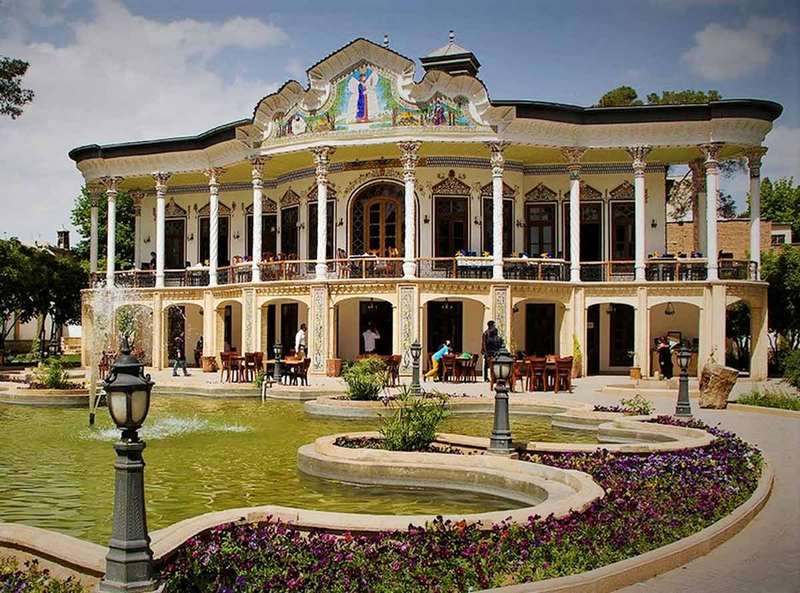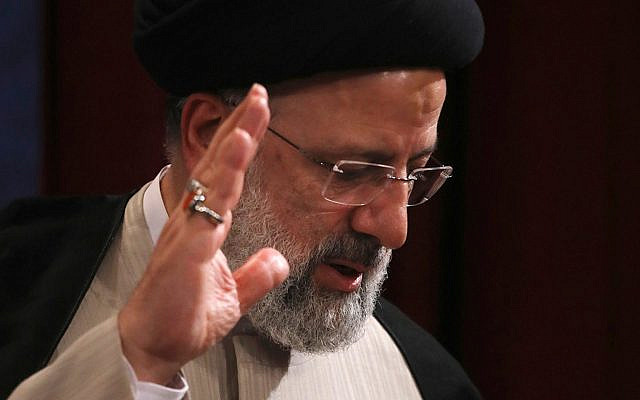Mullah’s Islamic Caliphate,The Succession Scenario
Published on: 2021-06-08
“The rule or reign of a caliph or chief Muslim ruler” is the popular meaning of Caliphate.
Historically, after the death of Mohammad (8 June 632 CE), an Arab political leader and the religious founder of regional Islam in Hijaz; the successors shaped the 1st Islamic Caliphate. even though, With Muhammad’s death, disagreement broke out over who his successor would be, but for preserving the spoils of war and confiscated wealth , Women and power, they solved the problem by sword accordingly. because after the unexpected death of Mohammad, it was a serious crisis and bloody power struggle all over the occupied places and among the Arab rebellious tribes. astonishingly, most of the tribes, in Bahrain, Yemen, Oman, converted to new faith [The History of al-Tabari & Stories of the Prophets ] considerably, most of the nonbelievers were killed and beheaded by Islamic atrocious commanders. [Arnold Toynbee, A Study of History]
This is a famous point that the Companions and followers of Mohammad, before his burial and funeral, had started plotting and intriguing against each other. intrinsically they seized the opportunity to get wealth and power, there were many challengers for succession. [Ibn Hisham; The Life of the Prophet]
With the announcement of the emergency situation, first Caliph tried to oppress any crisis and resistance of opponents through all Arabian Peninsula, viciously. he labeled the opponents as Infidels!
astonishingly, similar to Mohammad, there were some of the pretenders to the throne of Islam who claimed to be the prophet of God [The Collection of histories and Tales].
hurriedly, the council of Mohammad’s friends solved the problem, and they created a new government under name of Caliphate they wanted to monopolize the Islamic Power. so, they brand the rivals as liars! [The Arabs in History, Bernard Lewis]
there was no vision about the future of the Islamic Caliphate after appointing the 1st Caliph. there was no election by the vote of the Islamic Caliph. fundamentally, there was no divine legitimacy. Undeniably, he found legitimacy with this ruthless policy and suppression of rebellion. [History of Arabx, P.K.Hitti]
then, The Rashidun Caliphate was the first mechanism of the four major caliphates instituted following the death of Muhammad. It was ruled by the first of 5 successive caliphs (successors).
The Rashidun Caliphate is portrayed as a 25 year era of rapid military expansion, subsequently a five-year period of internal strife. four of these Islamic caliphs were assassinated by the hands of Muslim opponents (Omar, Uthman, Ali, Hassan ).
intentionally and erroneously, they announced that , their faith is for all the world! but in reality, it was the local religion based on Arab Peninsula’s culture[Quran; Nahl 36 & Sojdeh 23 & Haj 34]. furthermore, Islam was an Arabic faith and religion was created specifically for Arabs in Arab Peninsula. remarkably, for the purpose of development in their caliphate, they started to used military forces to declare wars on another lands and to attack them brutally. their main goal was seizing power and wealth. [Sir William Muir; The Life of Muhammad & 23 Years , Ali Dashti & Hubert Grimme, Muhammad]
more to the point, The Rashidun Caliphate had started Islamic Jihad (a struggle or fight against the enemies of Islam; Nowadays is labeled as Islamic Terrorism) under the name of Islam and Holy Wars. [T.W.Arnold; The Preaching of Islam]
in the possible scenario, the main purpose was an economical and political motivation. likewise, most of the verses regarding jihad were added to Quran during the 2nd and third Caliph which leads to political developments in the Islamic Caliphate.
In 637, a Muslim army under the 2nd Caliph Umar ibn al-Khattāb defeated a larger Persian force . The Arabs captured Ctesiphon shortly afterward. Thus the Muslims were able to seize a powerful financial resource, leaving the Sassanid government strapped for funds. [R.Dollinger, Muhammad’s religion]
The abrupt fall of the Sassanid Empire was completed in a period of just five years, and most of its territory was absorbed into the Islamic caliphate; however, many Iranian cities resisted and fought against the invaders several times. in reality, Islamic caliphates , with the flag of Islamic States in their hands, repeatedly suppressed revolts in cities [The Caliphs and Their Non-Muslim Subjects. A. S. Tritton ; Zarinkoob, Abdolhossein, Ruzgaran]
during the victories of Islamic rebels, they had thousands of war prisoners. they started slavery , trades with slaves and looting. admittedly, in Iran the Iranians never accept this new religion peacefully. The Arabs raided 83 cities harshly and destroyed everything which was in 200 dark years [Zarinkoob, Abdolhossein, 200 years silence ; The History of Tabari].
another example was Baghdad, where the new comers slaughtered thousands of opponents [Nafisi, Saeed , Iranian Social History ; R.Frye, The Abbasid Revolt].
later, 14 century after death of Mohammad, Islamic Caliphate had 3 directors who developed their mutual project. after 4 Caliphs of Rashidun Caliphate (632–661) it was 14 Caliphs of The Umayyad Caliphate (661–750 CE], 37 Caliphs of Abbasside in Baghdad (566–653 CE ; 750-1258), 22 Caliphs of Abbasid, Caliphate of Cairo (1261–1517), 16 Caliphs of Umayyad governors in al Andalus [711 – 1492 ] ; 17 Caliphs of The Fatimid Caliphate, in North of Africa [909–1171] ; 34 Caliphs of The Ottoman Caliphate [1517-1923]. totally Islamic history had 144 Amir al-Mu’minin or “Commander of the Faithful” or “Leader of the Faithful”.
In Iran, the Shias (Shi’ite , schism), one of the branches of Islam, had power in the society of Iran by religious institutions and network of Mosques. Shia consider Ali to have been divinely appointed as the successor to Muhammad, and as the first Imam.
in The Safavid dynasty (from 1501 to 1736) conversion of Iran to Shia Islam was a process that took place roughly over the 16th through 18th centuries and turned Iran (Persia), which previously had a Sunni majority, into the spiritual bastion of Shia Islam. It was a process that involved forced conversion [ Arshin Adib-Moghaddam , Psycho-nationalism; The Lure of the Other; Islam: Art and Architecture, Könemann; Melissa L. Rossi , What Every American Should Know about the Middle East ]
during 235 years, Shia’ Mullahs influenced in all parts of Iranian Society. they were the supporter of tyrant kings of Safavid. the Kings of Safavids called themselves as the legitimate representative of Imam Zaman/ al-Mahdi (born 870 CE). based of Shia, he is the final Imam of the Twelve Imams who will emerge with Isa (Jesus) in order to fulfill their mission of bringing peace and justice to the world. even though, Most Sunni Muslims reject that he was the Mahdi and believe that the Mahdi has not yet been born. [ An Introduction to Shi’i Islam ]
a couple of years later, it was another religious system with same ideology. The Qajar dynasty which was an Iranian royal dynasty of Turkic origin, specifically from the Qajar tribe, ruling over Iran from 1789 to 1925. [ Abbas Amanat, The Pivot of the Universe; William Bayne Fisher. Cambridge History of Iran ; Choueiri, Youssef M., A companion to the history of the Middle East ]
the religious atmosphere of the Iran got transition in its religious traditions with the rise of safavids who used the religious card throughout their tenure and emerged as the champions of Shiaism in Iran. Qajars being their successors also fallowed almost the same religious policy as matter of fact upto their times Shiaism had become dominant faith in Iran. Shia traditions were always used by Qajar rulers for legitimization of their power. The Qajars shrouded themselves in a religious aura. They declared themselves Protectors of Shi‘ism, Keepers of the Koran, Commanders of the Faithful, and Girders of Imam Ali‘s Sword.
during these 2 paradigm – Safavids and Qajar – the religious network of Mullahs in Iran had developed dramatically. but on the contrary, after emergence of Reza Shah Pahlavi (15 December 1925 -16 September 1941), Mullahs had no power anymore. Shia Mullahs During these years , from 1501 until 1925 , claimed that the king in the Shia Land of Iran is a trustee to preserve the power , because power is related to Imam Zaman/ al-Mahdi . historically and logically, it’s a insignificant. but after 1941, Shia Mullahs tries to reestablish their power in Iranian Society.
for that reason, they used Islamic Terrorism in some Islamic and Marxist Militia Groups against Shah or Mohammad Reza Pahlavi.
after 1979, a Shia Mullah came to power and the religious circle around Khomeini seized the power in Iran. The Shia Mullahs shaped the Shia Islamic Caliphate, or an autocratic regime in Tehran. when Khomeini died on 1989, Khamenei was a successor and now he is 83 years old. although, he called himself as the leader of all Muslims in entire world but he is the leader of a Shia country like Iran and during 31 years, he shaped Shia Crescent in Middle East.
currently, one of the potential scenarios for Khamenei’s succession is his son. Mojtaba is behind the scene and controls all the issues related to Khamenei. This scenario is reminder of Abbasside Caliphate that the power was hereditary. and in another scenario is Ebrahim Raisi, the current candidate for circus of presidential election in June 2021.











